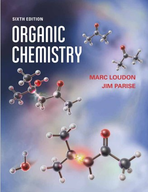Around 1912, Swiss chemist Richard Willsttter (who subsequently was awarded the 1915
Chapter 23, Problem 23.77(choose chapter or problem)
Around 1912, Swiss chemist Richard Willsttter (who subsequently was awarded the 1915 Nobel Prize in Chemistry) treated diamine A with methyl iodide and then with Ag2O and heat, whereupon a hydrocarbon B, C8H8, distilled from the reaction mixture. Compound B reacted rapidly with Br2 under mild conditions. Treatment of compound C in the same way gave a hydrocarbon D, C6H6, which did not react with Br2. N(CH3)2 N(CH3)2 N(CH3)2 (CH3)2N A C Identify the two hydrocarbons B and D, and explain their very different behavior toward Br2. (Willsttter concluded from these observations that compound D could not be an alkene.)
Unfortunately, we don't have that question answered yet. But you can get it answered in just 5 hours by Logging in or Becoming a subscriber.
Becoming a subscriber
Or look for another answer
